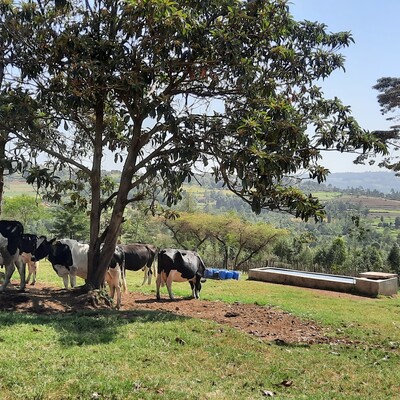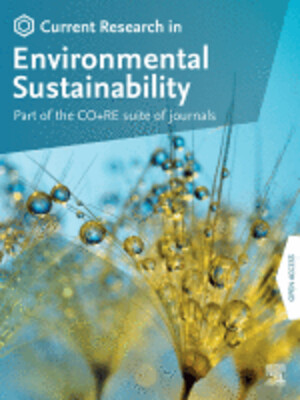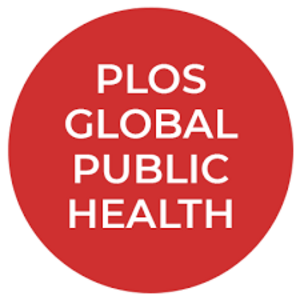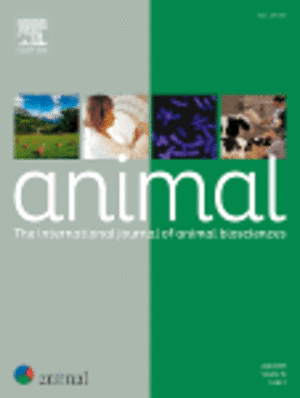
Rangelands Initiative events at COP26 highlight the importance of pastoral livestock systems
On November 5, the World Alliance of Mobile Indigenous Peoples (WAMIP), supported by the Rangelands Initiative, held an event called 'sheep for the climate' at the Govan docks in Glasgow as part of COP26. The event brought together an international delegation of pastoralists and Scottish sheep farmers from the Rare Breeds Survival Trust to discuss an important theme not covered by the official COP program: pastoralists and extensive livestock systems' role in ecosystem restoration, climate change mitigation and resilient food systems. It highlighted that despite growing criticism of the livestock sector, the world's pastoralists are an integral part of the solution to the global environmental challenges we face.
Travelling alongside the Scottish sheep farmers to the Govan docks was a flock of four-horned Hebridean sheep. 'It brings people back to the way things used to be and connects people with farming and sheep production', said one Scottish sheep farmer. While sheep may not be the first thing that comes to mind when you think of COP26, he said, they have important implications for the future of our planet.
A rare breed native to Scotland, Hebridean sheep 'are very low maintenance, very low input'. In contrast to commercial sheep artificially brought into season through a high-input process involving large amounts of fertilizer and pesticides, Hebridean sheep naturally thrive on 'the scruffiest of grasses on the roughest of hillsides'. The grasses they feed on require no artificial fertilization, and the sheep return fertilization to the soil in the form of manure, enhancing the productivity of Scotland's grasslands.
Hebridean sheep can also restore surrounding ecosystems through 'conservation grazing'. Their tendency to browse on coarse, leaf-growing vegetation makes them useful in ecological projects to control the spread of invasive scrub and preserve existing habitats for flora and fauna. The Hebridean sheep brought to the Govan docks are therefore valued for much more than their high-quality meat and wool—they are central to the health of Scotland's grassland ecosystems.

Photo credit: Rangelands Initiative
More broadly, the Hebridean sheep are representative of the importance pastoral livestock systems have to the health of the world’s rangelands, which cover approximately 54 per cent of the earth’s terrestrial surface according to the newly launched Rangelands Atlas. As global leaders respond to the urgent threat posed by climate change, they must understand the role pastoralists and their livestock have in maintaining the landscapes they call home.
Unfortunately, the livestock sector has become the 'climate villain' of agriculture. This sweeping criticism of the livestock sector can be misleading, for it fails to differentiate between industrial and more climate-friendly pastoral systems. 'Industrial livestock systems can be harmful in terms of methane emissions, water use and manure pollutants, but this is not the case for mobile pastoralist systems', said a WAMIP representative.
Rather than contribute to environmental assaults like climate change, land degradation and desertification, pastoralism can actually improve the environment, enhance biodiversity and reduce climate impacts. This point was driven home during a COP26 side-event to 'sheep for the climate' called 'mobile pastoralism for climate change mitigation, ecosystem restoration and resilient food systems', also supported by the Rangelands Initiative, which gathered pastoralists from around the world to discuss the challenges and opportunities pastoralism is facing in relation to climate change.
'The current climate emergencies are putting more and more pressure on the day-to-day life of indigenous people and local communities around the world', said Ykhanbai Khijaba, chair of the Regional Support Group (RISG) of Central Asia and Mongolia for the International Year of Rangelands and Pastoralists. But pastoralism offers effective solutions to these problems—not only do pastoralists produce very little CO2 emissions, but the rangelands they manage support tremendous amounts of carbon sequestration and are better at reflecting solar radiation than darker forests. The vibrant rural landscapes and abundant biodiversity that make these environmental services possible have emerged on rangelands over millennia through the interactions between native vegetation and grazers. In this way, pastoralists and their grazing livestock are fundamental to rangelands' ability to mitigate climate change.

'Sheep for the climate' event (photo credit: Rangelands Initiative)
In addition to the growing climate crisis, the need to develop a sustainable and resilient global food system was another central topic at the 'sheep for the climate' and 'mobile pastoralism for climate change mitigation, ecosystem restoration and resilient food systems' events. Pastoral livestock systems are an essential part of the global food system, with many areas of the world relying on livestock-derived foods as a primary source of protein. However, a recent report from WAMIP and partner organizations reveals that millions who depend on pastoral livestock production for their nutrition needs are being ignored in debates about the future of food.
Excluding pastoralists from these discussions can be dangerous in a world where the availability of natural resources and climate patterns are increasingly variable, generating concern around production failures and food crises. Adding to this concern, many countries are increasingly reliant on international trade to meet their nutrition needs. This increases global vulnerability if food production is affected across several regions simultaneously, and long food supply chains also contribute to global greenhouse gas (GHG) emissions.
In this context, meeting the global demand for meat and milk through local, diversified pastoral production methods can reduce countries' reliance on food imports and vulnerability to global production failures. On a more local level, pastoral food production can support healthy diets in the world's most vulnerable communities by supplying nutrient-dense food to rural areas. Additionally, because herders travel with their livestock and work in harmony with nature to access water and forage, pastoral production inputs are low relative to outputs. Given these benefits, the global delegation of pastoralists at COP26 stressed that any vision of a sustainable and resilient global food system must include pastoralists and their livestock.
Despite all the benefits pastoralists provide, their perspective continues to be overlooked in international discussions about the future of our planet. This cannot continue, for as the WAMIP representative said, if we are to effectively and equitably address climate change, 'we can't afford to be naive in our efforts to take action'. Pastoral livestock systems can contribute to ecosystem restoration, climate change mitigation and sustainable and resilient food production. However, to realize the full benefits pastoralism can provide, pastoralists will need greater support and recognition from the global community. By bringing people from around the world together to discuss the importance of pastoral livestock systems, the COP26 events supported by the Rangelands Initiative are an essential step towards that goal.
Uruguay Sheep (photo credit: CIAT)
Related Stories
COP26: Towards Sustainable Livestock Systems
Loss of communal grazing lands in India threatens the status of pastoralist women



















